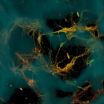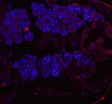(Press-News.org) Scientists hunting for life beyond Earth have discovered more than 1,800 planets outside our solar system, or exoplanets, in recent years, but so far, no one has been able to confirm an exomoon. Now, physicists from The University of Texas at Arlington believe following a trail of radio wave emissions may lead them to that discovery.
Their recent findings, published in the Aug. 10 issue of The Astrophysical Journal, describe radio wave emissions that result from the interaction between Jupiter's magnetic field and its moon Io. They suggest using detailed calculations about the Jupiter/Io dynamic to look for radio emissions that could indicate moons orbiting an exoplanet.
"This is a new way of looking at these things," said Zdzislaw Musielak, professor of physics in the UT Arlington College of Science and co-author of the new paper. "We said, 'What if this mechanism happens outside of our solar system?' Then, we did the calculations and they show that actually there are some star systems that if they have moons, it could be discovered in this way."
Joaquin Noyola, a Ph.D. graduate student in Musielak's research group, is lead author on the new paper and Suman Satyal, a Ph.D. graduate student in the same group, is another co-author. It is titled "Detection of Exomoons Through Observation of Radio Emissions."
The idea of life thriving on a moon has inspired science fiction, such as Star Wars' furry Ewoks. Scientists even think some moons in our own solar system, Saturn's Enceladus and Jupiter's Europa, are good candidates for supporting life based on their atmospheric composition, potential for water and distance from the sun.
The difficulty comes in trying to spot an exomoon using existing methods, Musielak said. NASA's Kepler telescope, for example, measures changes in brightness from a star to identify transits, or passes, by an orbiting planet. Reliably isolating whether a moon is part of that transit hasn't been possible, so far.
The UT Arlington team builds on earlier theories about using radio wave observations to discover exoplanets, but applies it in a new way. Their focus is on Io and its ionosphere, a charged upper atmosphere that is likely created by the moon's extremely active volcanoes.
During its orbit, Io's ionosphere interacts with Jupiter's magnetosphere, a layer of charged plasma that protects the planet from radiation, to create a frictional current that causes radio wave emissions. These are called "Io-controlled decametric emissions" and the researchers believe finding similar emissions near known exoplanets could be key to predicting where other moons exist.
Noyola said it is important to note when modeling the Io example to other planet/moon pairs that other moons do not necessarily have to have the volcanic activity of Io to have an ionosphere.
"Larger moons – such as Saturn's largest moon, Titan - can sustain a thick atmosphere, and that could also mean they have an ionosphere. So volcanic activity isn't a requirement," Noyola said.
The paper also addresses Alfvén waves that are produced by the Io and Jupiter magnetosphere interaction and says those waves also could be used to spot exomoons in similar situations. Alfvén waves are the rippling of the plasma in a magnetic field, first described by Hannes Alfvén in the early 1940s.
In their paper, the UT Arlington team even pinpointed two exoplanets where they are "cautiously optimistic" that the observational community could apply the study's calculations to search for exomoons the size of our moon with future, more sensitive radio telescopes – Gliese 876b, which is about 15 light years way, and Epsilon Eridani b, which is about 10.5 light years away. Current telescopes – such as the National Science Foundation-supported Long Wavelength Array – could be used to detect exomoons in closer planetary systems, with the bigger moons holding better the possibilities of detection, Satyal said.
"Most of the detected exoplanets are gas giants, many of which are in the habitable zone," he said. "These gas giants cannot support life, but it is believed that the exomoons orbiting these planets could still be habitable."
INFORMATION:
The UT Arlington team's research was partially funded by the National Science Foundation.
About UT Arlington
The University of Texas at Arlington is a comprehensive research institution and the second largest institution in The University of Texas System. The Chronicle of Higher Education ranked UT Arlington as the seventh fastest-growing public research university in 2013. U.S. News & World Report ranks UT Arlington fifth in the nation for undergraduate diversity. Visit http://www.uta.edu to learn more. Follow #UTAdna on Twitter.
Follow the radio waves to exomoons, UT Arlington physicists say
2014-08-11
ELSE PRESS RELEASES FROM THIS DATE:
Digoxin tied to increased risk of death in patients with atrial fibrillation
2014-08-11
In An Account of the Foxglove and Some of its Medical Uses, published in 1785, Sir William Withering cautioned readers that extracts from the plant foxglove, also called digitalis, was not a perfect drug. "Time will fix the real value upon this discovery," he wrote.
Now, more than 200 years later, researchers at the Stanford University School of Medicine have validated Withering's warning with the discovery that patients with atrial fibrillation — a rapid and irregular heart rhythm — who are treated with the digitalis-derivative digoxin are more likely to die than similar ...
Bioengineers make functional 3-D brain-like tissue model
2014-08-11
MEDFORD/SOMERVILLE, Mass. (August 11, 2014) --The human brain remains one of the least understood organs in the human body, because of its complexity and the difficulty of studying its physiology in the living body. Tufts University researchers today announced development of the first reported complex three-dimensional model made of brain-like cortical tissue that exhibits biochemical and electrophysiological responses and can function in the laboratory for months. The engineered tissue model offers new options for studying brain function, disease and trauma, and treatment. ...
Trapped atmospheric waves triggered more weather extremes
2014-08-11
It has been linked to a recently discovered mechanism: the trapping of giant waves in the atmosphere. A new data analysis now shows that such wave-trapping events are indeed on the rise.
"The large number of recent high-impact extreme weather events has struck and puzzled us," says Dim Coumou, lead author of the study conducted by a team of scientists from the Potsdam Institute for Climate Impact Research (PIK). "Of course we are warming our atmosphere by emitting CO2 from fossil fuels, but the increase in devastating heat waves in regions like Europe or the US seems ...
Preemies' gut bacteria may depend more on gestational age than environment
2014-08-11
Scientists believe babies are born with digestive systems containing few or no bacteria. Their guts then quickly become colonized by microbes — good and bad — as they nurse or take bottles, receive medication and even as they are passed from one adoring relative to another.
However, in infants born prematurely, researchers at Washington University School of Medicine in St. Louis have found that the population of bacteria in babies' gastrointestinal tracts may depend more on their biological makeup and gestational age at birth than on environmental factors. The scientists ...
Bioengineers create functional 3-D brain-like tissue
2014-08-11
Bioengineers have created three-dimensional brain-like tissue that functions like and has structural features similar to tissue in the rat brain and that can be kept alive in the lab for more than two months.
As a first demonstration of its potential, researchers used the brain-like tissue to study chemical and electrical changes that occur immediately following traumatic brain injury and, in a separate experiment, changes that occur in response to a drug. The tissue could provide a superior model for studying normal brain function as well as injury and disease, and ...
Scientists demonstrate long-sought drug candidate can halt tumor growth
2014-08-11
LA JOLLA, CA – August 11, 2014 – It's a trick any cat burglar knows: to open a locked door, slide a credit card past the latch.
Scientists at The Scripps Research Institute (TSRI) tried a similar strategy when they attempted to disrupt the function of MYC, a cancer regulator thought to be "undruggable." The researchers found that a credit card-like molecule they developed somehow moves in and disrupts the critical interactions between MYC and its binding partner.
The research, published the week of August 11 in the journal Proceedings of the National Academy of Sciences, ...
Elusive viral 'machine' architecture finally rendered
2014-08-11
VIDEO:
The new rendering of the protein-DNA complex, or machine, that the Lambda virus uses to insert its DNA into that of its E. coli host.
Click here for more information.
For half a century biologists have studied the way that the lambda virus parks DNA in the chromosome of a host E. coli bacterium and later extracts it as a model reaction of genetic recombination. But for all that time, they could never produce an overall depiction of the protein-DNA machines that carry out ...
Native bacteria block Wolbachia from being passed to mosquito progeny
2014-08-11
Native bacteria living inside mosquitoes prevent the insects from passing Wolbachia bacteria -- which can make the mosquitoes resistant to the malaria parasite -- to their offspring, according to a team of researchers.
The team found that Asaia, a type of bacteria that occurs naturally in Anopheles mosquitoes, blocks invasion of Wolbachia into the mosquitoes' germlines -- the cells that are passed on through successive generations of an organism -- thus stopping the insects from transmitting Wolbachia to their offspring.
"Wolbachia infects up to 70 percent of all known ...
Novel drug action against solid tumors explained
2014-08-11
(SACRAMENTO, Calif.) — Researchers at UC Davis, City of Hope, Taipai Medical University and National Health Research Institutes in Taiwan have discovered how a drug that deprives the cells of a key amino acid specifically kills cancer cells.
Their paper, published today in Proceedings of the Academy of Sciences, is the culmination of nearly a decade of research into the role of arginine – and its deprivation – in the generation of excessive autophagy, a process in which the cell dies by eating itself.
Study co-author Hsing-Jien Kung, a renowned cancer biologist and ...
Reconstructions show how some of the earliest animals lived -- and died
2014-08-11
VIDEO:
This is an animation of the growth and development of the extinct rangeomorph species Beothukis mistakenis, which lived during the Ediacaran Period from approximately 575 to 555 million years ago....
Click here for more information.
A bizarre group of uniquely shaped organisms known as rangeomorphs may have been some of the earliest animals to appear on Earth, uniquely suited to ocean conditions 575 million years ago. A new model devised by researchers at the University ...







